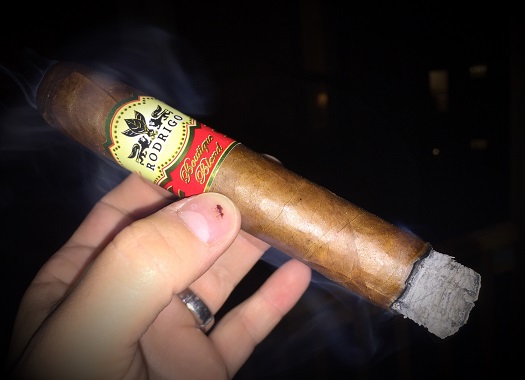
Not long ago, Rodrigo Cigars was part of the House of Emilio, an organization headed by Gary Griffith that provided distribution of what Griffith called the “best of the boutiques.†Also included under this allied umbrella were brands like 1502, Bodega, Epicurean, Ezra Zion, Guayacan, Herederos, and Nomad.
 More recently, Griffith departed the outfit, and the confederated brands—now called Boutiques United—were pared down to four: 1502, Emilio, Ezra Zion, and Nomad. Anecdotally speaking, the social media visibility of all of the involved brands (with the exception of Fred Rewey’s Nomad) has declined considerably since the heyday of the House of Emilio. This observation is based on nothing more than my own personal experience, mind you, but I feel safe making the claim. All this isn’t to say the cigars themselves aren’t any good, or can’t still be purchased.
More recently, Griffith departed the outfit, and the confederated brands—now called Boutiques United—were pared down to four: 1502, Emilio, Ezra Zion, and Nomad. Anecdotally speaking, the social media visibility of all of the involved brands (with the exception of Fred Rewey’s Nomad) has declined considerably since the heyday of the House of Emilio. This observation is based on nothing more than my own personal experience, mind you, but I feel safe making the claim. All this isn’t to say the cigars themselves aren’t any good, or can’t still be purchased.
These were the thoughts jumbling in my brain as I came across several Rodrigo Boutique Blend G6s in one of my humidors. No telling how long they had been there. Since this is not a blend my colleagues or I have previously reviewed, I decided to fire them up.
The story behind the Rodrigo brand is one of a man who loved cigars, flew to Santiago on a whim in 2010, and by chance got connected to a former master blender for Davidoff who taught him the business. That man is George Rodriguez, founder and president of Rodrigo Cigars.
Rodrigo consists of three small-batch blends: Habano Clasico, La Fortaleza, and Boutique Blend. The latter sports a dark, clean, moderately oily, slightly reddish Habano Ecuador wrapper around Dominican binder and filler tobaccos. It is available in three sizes: G4 (6.25 x 54), G5 (5.5 x 56), and G6 (6 x 60). The G6 retails for about $9 and has a spongy feel with pre-light notes of honey and graham. The large, thick cigar boasts a smooth cold draw.
As with any 60-ring gauge smoke, toasting the foot and establishing an even light takes patience. My advice is to enjoy the process and take in the ambient notes of sweetness and spice, which set the tone for the profile to come.
On the palate, the G6 is mild- to medium-bodied and balanced with flavors of bread, honey, cedar, and red pepper. The texture is silky. While there’s ample spice on the aftertaste, the overall impression is mostly creamy and light—similar to a whipped butter sensation. At the midway point, the spice increases and the strength ramps up to decidedly medium. Thereafter, I find few changes.
Construction is damn good for a cigar this large. The burn is immaculate, the draw is easy, the ash holds firm, and the smoke production is about average.
The Boutique Blend line was specifically built to taste best in thick formats, hence the ring gauges of 54, 56, and 60. As someone who prefers thinner smokes, though, I can’t help but wonder what this might taste like in a lancero, or even in a standard robusto frame. I wonder if the profile’s character would hold intact, and if the intensity would be amplified.
Regardless, judging the G6 on its own merits, I feel a rating of three and a half stogies out of five is most appropriate.

[To read more StogieGuys.com cigar reviews, please click here.]
–Patrick A
photo credit: Stogie Guys


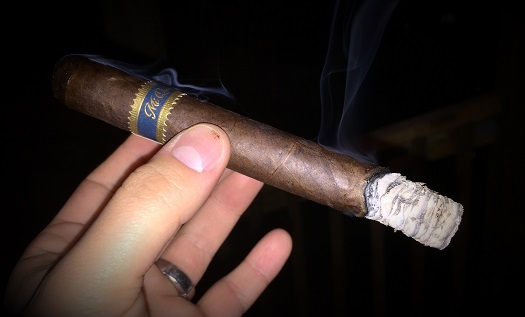
 This mad dash was best personified by Steve Saka of
This mad dash was best personified by Steve Saka of 
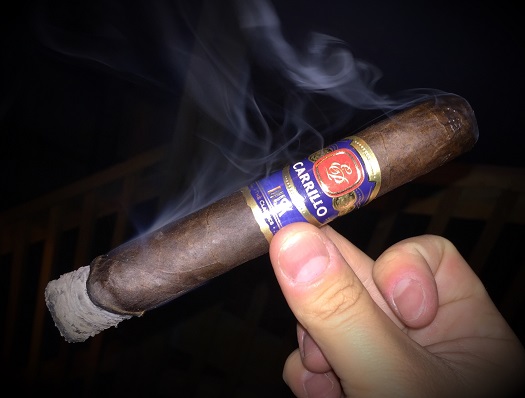
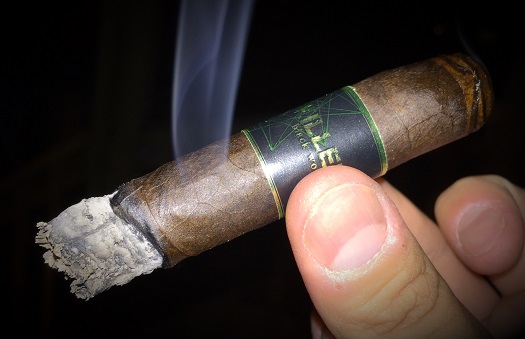
 The three original BLK WKS cigars were Killer Bee (4.5 x 46), an Ecuador Maduro-wrapped petite corona; Rorschach (5 x 38), an Ecuador Habano-wrapped petite panatela; and NBK (6 x 46), an Ecuador Habano Oscuro-wrapped corona larga. Green Hornet, a stronger follow-up to the Killer Bee that’s distinguished by its Candela closed foot, was added this summer. All of these are offered in addition to BLTC’s core lines, which include Lawless, Royalty,
The three original BLK WKS cigars were Killer Bee (4.5 x 46), an Ecuador Maduro-wrapped petite corona; Rorschach (5 x 38), an Ecuador Habano-wrapped petite panatela; and NBK (6 x 46), an Ecuador Habano Oscuro-wrapped corona larga. Green Hornet, a stronger follow-up to the Killer Bee that’s distinguished by its Candela closed foot, was added this summer. All of these are offered in addition to BLTC’s core lines, which include Lawless, Royalty, 

 More recently, Griffith departed the outfit, and the confederated brands—now called Boutiques United—were pared down to four: 1502, Emilio, Ezra Zion, and Nomad. Anecdotally speaking, the social media visibility of all of the involved brands (with the exception of Fred Rewey’s Nomad) has declined considerably since the heyday of the House of Emilio. This observation is based on nothing more than my own personal experience, mind you, but I feel safe making the claim. All this isn’t to say the cigars themselves aren’t any good, or can’t still be purchased.
More recently, Griffith departed the outfit, and the confederated brands—now called Boutiques United—were pared down to four: 1502, Emilio, Ezra Zion, and Nomad. Anecdotally speaking, the social media visibility of all of the involved brands (with the exception of Fred Rewey’s Nomad) has declined considerably since the heyday of the House of Emilio. This observation is based on nothing more than my own personal experience, mind you, but I feel safe making the claim. All this isn’t to say the cigars themselves aren’t any good, or can’t still be purchased.
 These days, I’m starting to see more pictures of Mi Querida than Sobremesa. That’s not entirely surprising, I think, because the Broadleaf-wrapped Mi Querida is new to the market, whereas Sobremesa was introduced last summer. Personally, I haven’t had a chance to try Mi Querida yet (rest assured it’s on my short list). To tide myself over, today I thought I’d review the only Sobremesa vitola I haven’t yet sampled: the Corona Grande.
These days, I’m starting to see more pictures of Mi Querida than Sobremesa. That’s not entirely surprising, I think, because the Broadleaf-wrapped Mi Querida is new to the market, whereas Sobremesa was introduced last summer. Personally, I haven’t had a chance to try Mi Querida yet (rest assured it’s on my short list). To tide myself over, today I thought I’d review the only Sobremesa vitola I haven’t yet sampled: the Corona Grande.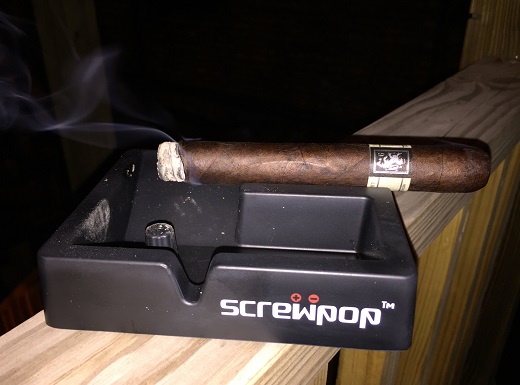
 But while Drew Estate lacks the history of industry stalwarts like Arturo Fuente or Joya de Nicaragua, it’s no spring chicken, either. It also can’t be considered among the ranks of small boutique outfits anymore. Drew Estate runs the largest cigar factory in Nicaragua—producing over 10,000 cigars a day—and in 2014 it was acquired by Swisher International, the largest cigar company in the world.
But while Drew Estate lacks the history of industry stalwarts like Arturo Fuente or Joya de Nicaragua, it’s no spring chicken, either. It also can’t be considered among the ranks of small boutique outfits anymore. Drew Estate runs the largest cigar factory in Nicaragua—producing over 10,000 cigars a day—and in 2014 it was acquired by Swisher International, the largest cigar company in the world. Patrick Ashby
Co-Founder & Editor in Chief
Patrick Ashby
Co-Founder & Editor in Chief Patrick Semmens
Co-Founder & Publisher
Patrick Semmens
Co-Founder & Publisher George Edmonson
Tampa Bureau Chief
George Edmonson
Tampa Bureau Chief